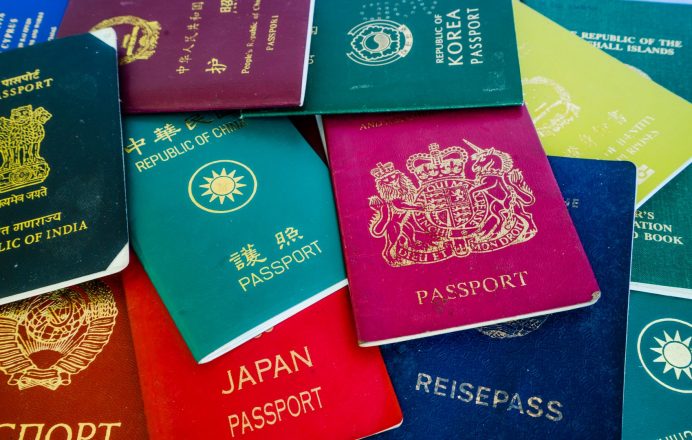사업과 거주권
사업 관련 거주권 신청에서 가장 많이 활용되는 카테고리는 기술이민과 사업이민입니다.
(a) 기술이민 카테고리는 뉴질랜드로 오고자 하는 사람들에게 뉴질랜드에서 필요한 기술을 갖추도록 만들어졌습니다. 여기에는 포인트 제도가 있습니다. 신청자는 160 포인트 이상인 경우에만 거주권을 신청할 수 있습니다. 포인트는 뉴질랜드에서의 자격, 경력, 나이 또는 제안받은 직업 등을 합산하여 부여됩니다. 기본적으로 신청자들은 건강과 성격(범죄사실) 요건을 충족해야 하고, 영어에 능통해야 하며, 55세 이하여야 합니다. 충분한 포인트를 모으기 위해서는 일반적으로 기술과 관련한 일자리를 제안받는 것이 매우 중요합니다.
(b) 사업 이민 카테고리에서 거주권을 신청하려면 여러 가지 방법이 있는데, 그 중 가장 일반적인 방법은 사업 거주 카테고리 또는 투자 카테고리를 신청하는 것입니다.
(I)사업가
사업 거주 비자에는 2년짜리와 6개월짜리가 있습니다.
2년짜리 사업 거주 비자 카테고리에서는 신청자가 뉴질랜드에 이익이 되는 사업을 설립하거나 인수해야 하며, 해당 사업을 최소 2년간 “사업주”로 운영해야 합니다. 이 경우, 신청자는 장기 사업 비자나 사업 비자를 소지할 필요가 없습니다.
6개월짜리 사업 거주 비자 카테고리에서는 (무엇보다도) 최소 3개 이상의 풀타임 일자리를 창출해야 하며, 500,000NZD를 그 사업에 투자해야 하는데 이 경우 좀 더 빠르게 거주권을 취득할 수 있습니다. 또한 자본 요건도 경우에 따라 면제될 가능성이 있습니다. 이 카테고리를 충족시키려면 해당 사업을 최소 6개월 동안 운영해야 하고, 신청자가 6개월 동안 사업주(자영업자) 상태였으며 현재도 똑같은 지위를 가져야 합니다. 이 카테고리에서 비자를 신청하려면 장기 사업 비자 또는 사업 비자를 소지해야 합니다.
위에 해당하는 비자를 신청하고자 한다면 반드시 건강 및 성격 요건을 충족해야 하며 영어(일정 점수) 실력을 갖추어야 합니다.
(II)투자자
투자자 카테고리에는 두 가지 하위 카테고리가 있습니다.
투자자1: 신청자는 3년 동안 뉴질랜드에 10,000,000NZD를 투자해야 합니다. 그리고 신청자는 뉴질랜드에서 3년 투자 기간의 마지막 2년간 각각 44일을 보내야 하며, 성장 투자에 2,500,000NZD를 투자한 경우 3년 투자 기간에 걸쳐 언제든지 뉴질랜드에서 88일을 보내야 합니다.
건강 및 성격 요구 사항이 있지만 연령, 사업 경험 또는 영어와 관련한 요구 사항은 없습니다.
투자자2: 카테고리에 따라 신청자는 4년간 뉴질랜드에 3,000,000NZD를 투자해야 합니다. 신청자는 건강 및 성격 요건을 충족하고, 66세 미만이어야 하며, 최소 3년 이상의 사업 경력이 있어야 하며 영어 점수가 필요합니다. 더불어 신청자는 매년 146일을 뉴질랜드에 머물러야 하며, 성장 투자에 최소 750,000NZD를 투자한 경우 4년의 투자 기간에 걸쳐 언제든지 뉴질랜드에서 438일을 보내야 합니다.
투자자1, 투자자2 카테고리의 신청자는 신청 후 12개월의 기간을 연장할 수 있지만 지명된 뉴질랜드에서 수용 가능한 투자에 투자자금을 이전해야 합니다.
위의 내용은 현재 기준 이민 카테고리에 대한 일반적인 요약입니다. 이민 카테고리는 언제든지 변경될 수 있습니다. 뉴질랜드로 이민에 관심이 있다면 뉴질랜드 이민국에 나와있는 가이드를 숙지하고, 신청 절차를 시작하기 전에 전문가의 조언을 구하는 것이 좋습니다.

















































